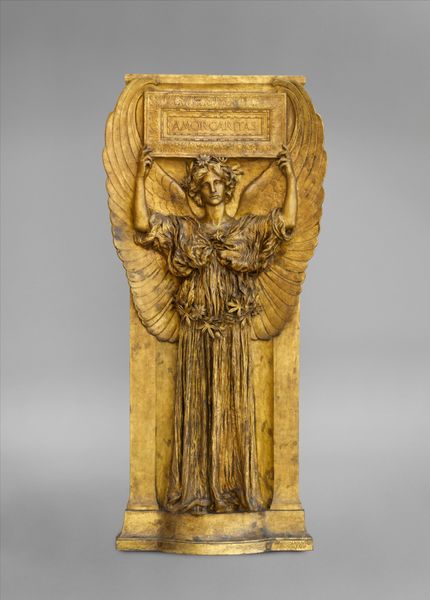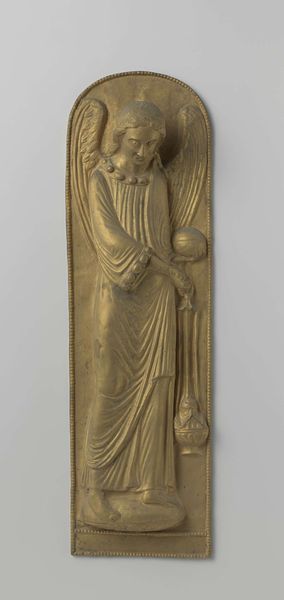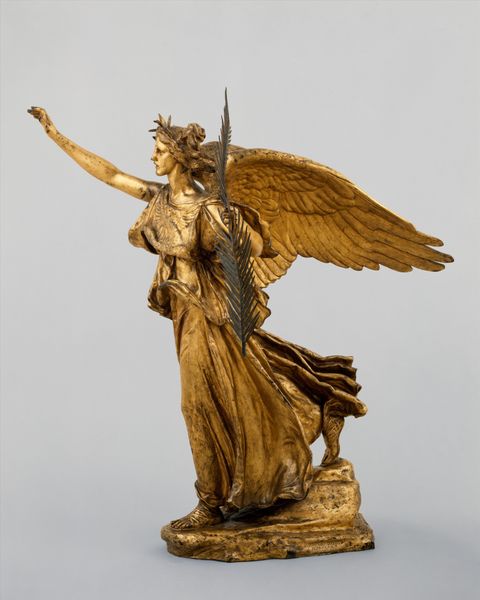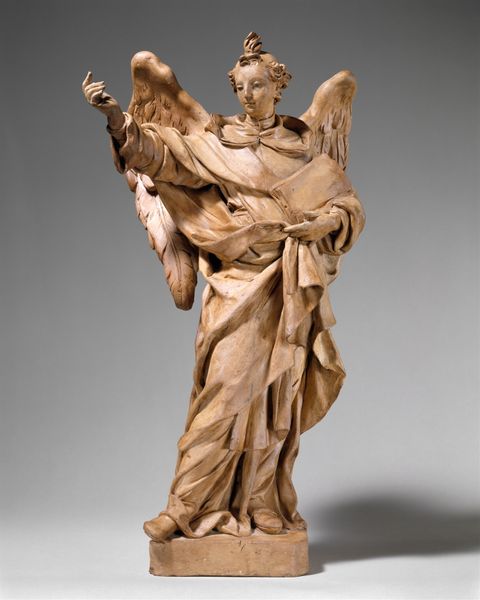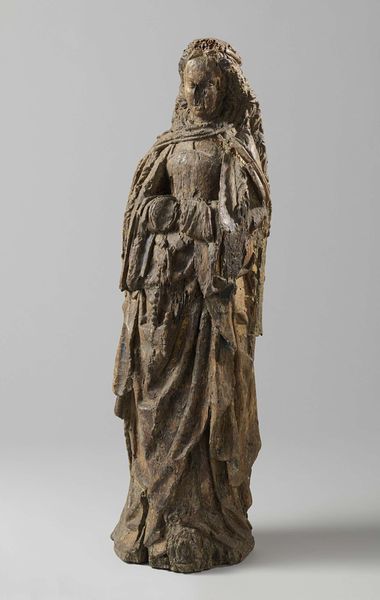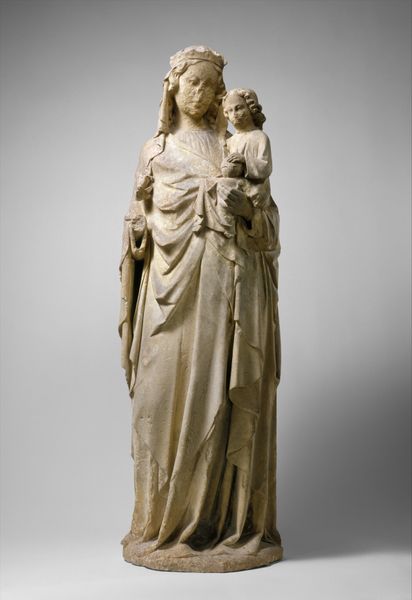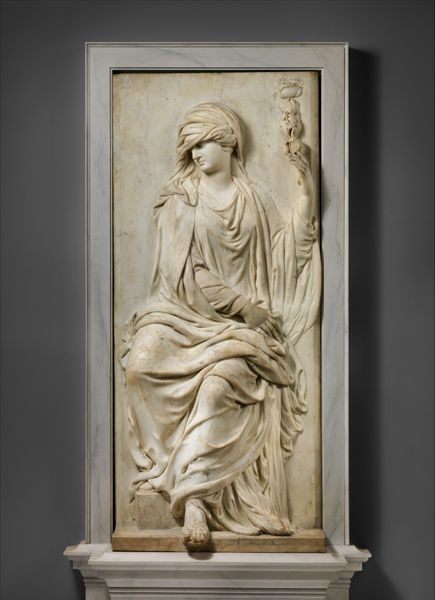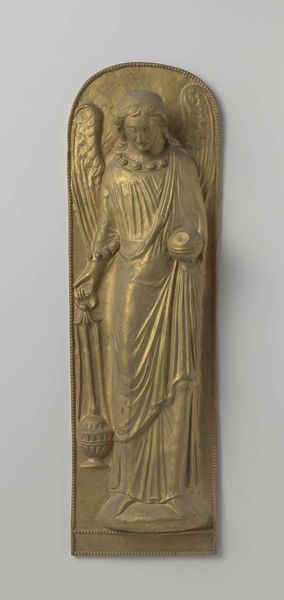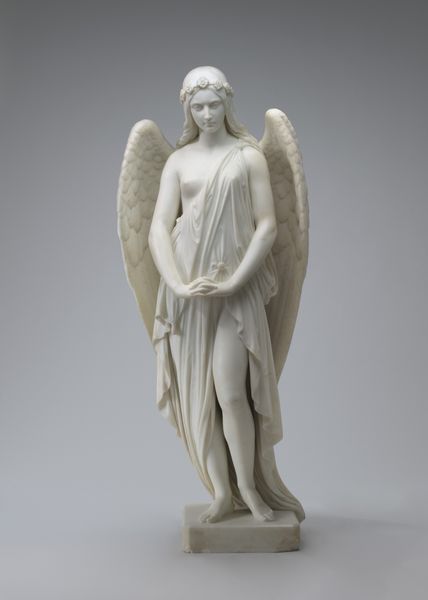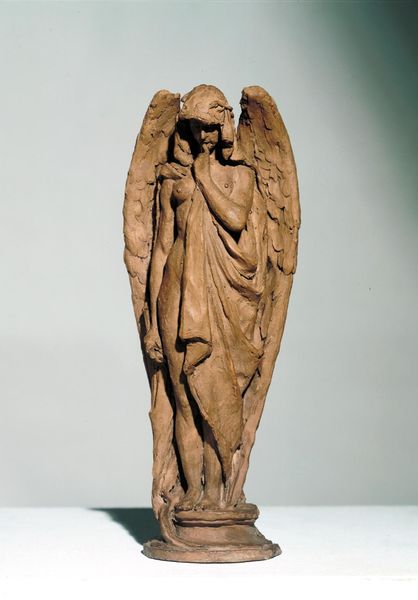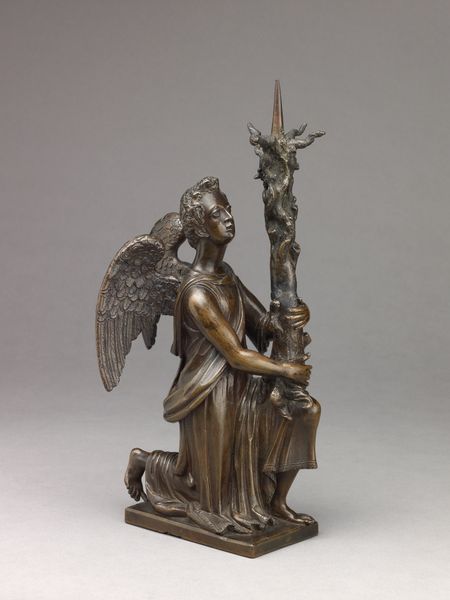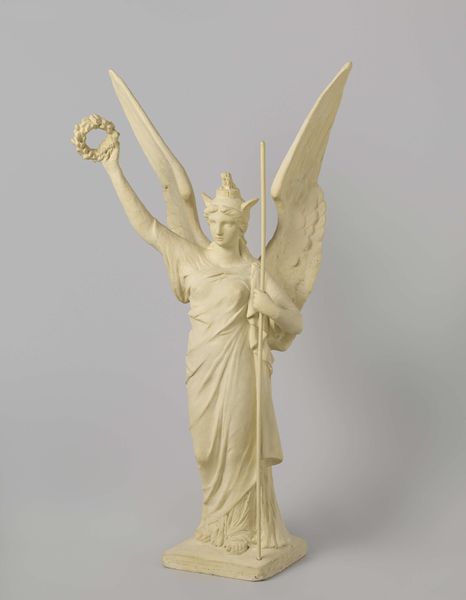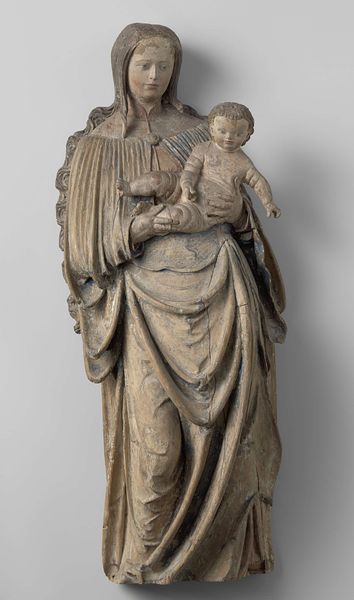
Dimensions: overall: 102.24 × 45.72 × 12.07 cm (40 1/4 × 18 × 4 3/4 in.)
Copyright: National Gallery of Art: CC0 1.0
Editor: Here we have "Amor Caritas" by Augustus Saint-Gaudens, a bronze relief created sometime between 1880 and 1905. It features a winged figure holding up a tablet. There’s almost a mass-produced feel to it, especially with the repetition of the drapery folds. What catches your eye about this work? Curator: My focus is on the labor involved. Bronze casting, even then, involved a complex process of industrial production. We see echoes of both artisanal craftsmanship and nascent industrialization here. How was this object meant to circulate? Was it intended for a wealthy patron’s home or mass reproduction? Its materiality tells a story about social class and artistic ambition in the Gilded Age. Editor: So, you're more interested in how it was made and who it was made for, rather than the image itself? Curator: Precisely. The artistic skill involved in manipulating bronze to achieve that delicate drapery is undeniable, but understanding the working conditions and economic drivers that facilitated the production is key. Was the artist hands-on, or did he delegate much of the work? These questions lead us to consider who *truly* created this object. Editor: I hadn't thought about it that way. It's easy to just see the finished product and not consider the industrial process. Curator: Consider the consumption. Bronze, at the time, signaled wealth. "Amor Caritas" thus becomes less an emblem of love and more a symbol of economic status displayed through the material itself. Editor: This makes me look at the piece with new eyes, no longer simply as an idealized representation, but as an artifact reflecting production, labor, and wealth. Curator: Exactly. We’ve moved from aesthetics to understanding the social context embedded in the sculpture's creation. It’s a transformation.
Comments
No comments
Be the first to comment and join the conversation on the ultimate creative platform.
